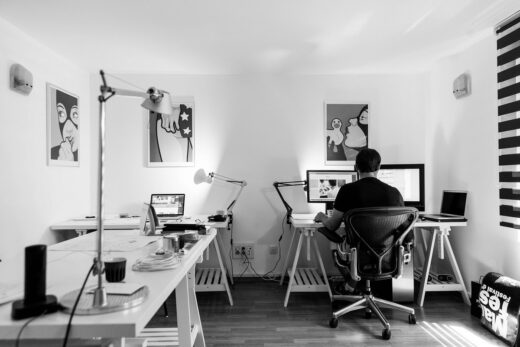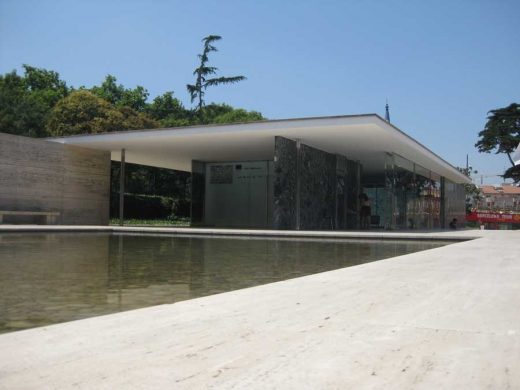How to Transform the Office into a Hive of Productivity Tips, House Clean Advice, Indoor Health Guide
How to Transform the Office into a Hive of Productivity
Oct 16, 2020
Article by Alex Thomas:
The open-plan office was hailed to be the innovation for amassed collaboration and enhanced productivity in the workplace. It was determined that breaking down walls and limiting physical barriers would smash productivity out of the park, hitting a grand slam for any company that implemented it. But ask yourself, ‘Will they come just because you build it,’ (Field of Dreams)? A revolutionary concept, if only in theory.
Learn from others’ epic failures
It turns out that the open-plan office did not negate the necessity for having individual, segregated, quiet rooms. Actually, people still need to retreat from the constant hyperactivity of ordered chaos that is an open-plan workplace.
What may have been a gross miscalculation of the human brain’s ability to stay on task and drown out excess noise and distraction when it needs to, but then be able to absorb the information that whirs by your head all day long is nothing if not exhausting, and anything but productive. Did they count on exhaustion?
Did they factor in those who have ADHD or other LDs (learning differences)? Even people without them find it too hard to cancel out all of the noise that pollutes the air around them.
So many questions. Where do you go to get work done that requires concentration to accomplish? Where do you take and make phone calls with clients, have sensitive conversations, and hide away from the onslaught of high-frequency pandemonium for a recharge of your sanity? Do the toilets have WiFi by any chance?
The psychology behind the open-plan workspace
An interesting finding by Ethan S. Bernstein and Stephen Turban from a study by Harvard University revealed that the open-plan office environment at Fortune 500 companies that were foreseen to incite collaboration and stimulate interactive dialogue did the opposite. People stopped talking face to face by 73 per cent, and 67 per cent resorted to inter-office emailing. Well, it was a nice try.
According to Bernstein and Turban, some social and environmental psychologists surmise that humans, like “social insects” that swarm together may need physical “boundaries to constrain their interactions, thereby reducing the potential for overload, distraction, bias, myopia and other symptoms of bounded rationality.”
The first steps to take
So to find the next big innovator for productivity, you might need to rethink the office floor plan with your specific company’s and teams’ cultural needs, the nature of your business, the industry demands, the pre-existing environment, and any other variables in play. Let it be a well-thought-out, consultation process that involves the very people for which the workplace will be purpose-built.
The vision should include concepts for versatility, comfortability, accommodation, functionality, and the promotion of good health and wellbeing.
What the floor plan might look like (in words)
Expansive communal area for everyone to come together – this might include the kitchen, a café, (accommodating and comfy) lounge spaces, chillout and a fun, games areas, a coffee cart and frozen yoghurt station, whatever the team has inspired.
Segregated but perhaps still open office spaces for individual teams inclusive layout, perhaps with some glass or wooden dividers, and plants. Provide a decent standing desk, remembering that functionality, comfortability, versatility, and the promotion of good health are key attributes of the office vision. You can read more about the benefits of standing desks on UpDownDesk.
Breakout spaces for informal collaboration and other myriad meetings, making the spaces adaptable with multi-use rooms. Providing private spaces, such as individual pods for quiet time and restoration, privacy and seclusion will help to mitigate the risk of stress, related to the more open office layout.
How to increase that productivity
Having an issue with productivity in the workplace is an indication of something else. Lack of productivity is a byproduct, if you will, of a different problem or set of problems.
Company policies
Having robust policies that mean something and are followed by everyone is essential to being a trusted employer. Health and safety, both physical and emotional, should be of utmost concern in the workplace and strictly monitored.
Workplace culture
Establishing workplace culture that is fun, inclusive, equal, respectful, celebrates achievement and offers constructive feedback is a great start. Complement those features with encouragement, consideration, consistency, and equality, a culture where everyone is on board and on the same page, and you will be onto a winner. Remember though that culture is a living, breathing beast. It must be cared for and maintained.
Social engagement
Encouraging healthy social interaction and making friends at work is known to be crucial for an individual’s job satisfaction. Avoid, at all costs, the formation of cliques that exclude others. Organise social events that coincide with the interests of your team.
Again, if cliques form naturally, as they tend to do, break up the cliques into different groups for team activities, always rotating the mix for optimum engagement. Encourage participation and use FOMO as a weapon against would-be wet blankets. Provide variation and choice, and consistent for everyone, with opt-in encouragement.
Daily downtime
As productivity will be soaring with all of your thoughtful strategising, give extra time for recreation, such as tennis, table tennis, basketball, baseball, touch rugby, or 30 minutes per day for leisure/exercise, personal reading, or whatever fun and relaxation look like to the individual employee. Not everyone is cut from the same cloth.
Active management
Excellent managers contribute, interact, and lead people by example. Keep an eye on the team interactions, and be aware of employee concerns. If they are not engaging, have courageous conversations to support them into team inclusion. Buddy systems and mentoring programmes, and pastoral care for those who need it are a fantastic offering that shows you and the company cares for your employees.
Proactive managers
Colleagues can have a devastating toll on your work happiness as can unresolved issues with bosses. OfficeVibe reports that a Tel Aviv study uncovered major health issues relating to colleague conflicts. Unhappiness at work is a productivity killer. Even worse, it can cause premature death to affected employees.
Wow! This seems like an outrageous claim perhaps, but if workplace shenanigans go unchecked, a downward spiral will suck the life out of your employees. And, if your workforce falls into the vortex, not just your productivity, but your company will go down with them.
Managers and company leaders, as captains of your teams, are you willing to go down with your ships? Protocol demands it. So make sure everyone is happy, healthy, and engaged in the office. Stimulation will be balanced with the right office environment that befits your team, and no one has to drown or get wet in the process.
How to transform office into hive of productivity – bottom line
So to recap, now you know human beings’ behaviour is like that of swarming insects, bad social interaction between colleagues can lead to ill health and even premature death, and captains have to go down with their sinking ship.
Open-office models are not guaranteed to streamline productivity. People streamline productivity and making people feel safe, happy, and a valued member of the team is the smartest way a company/manager can get the best from their personnel. Gone are the days of just cracking the whip to motivate workers into productivity.
Comments on this How to Transform the Office into a Hive of Productivity advice article are welcome.
Office Design
Building Articles
Comments / photos for the How to Transform the Office into a Hive of Productivity Guide page welcome



